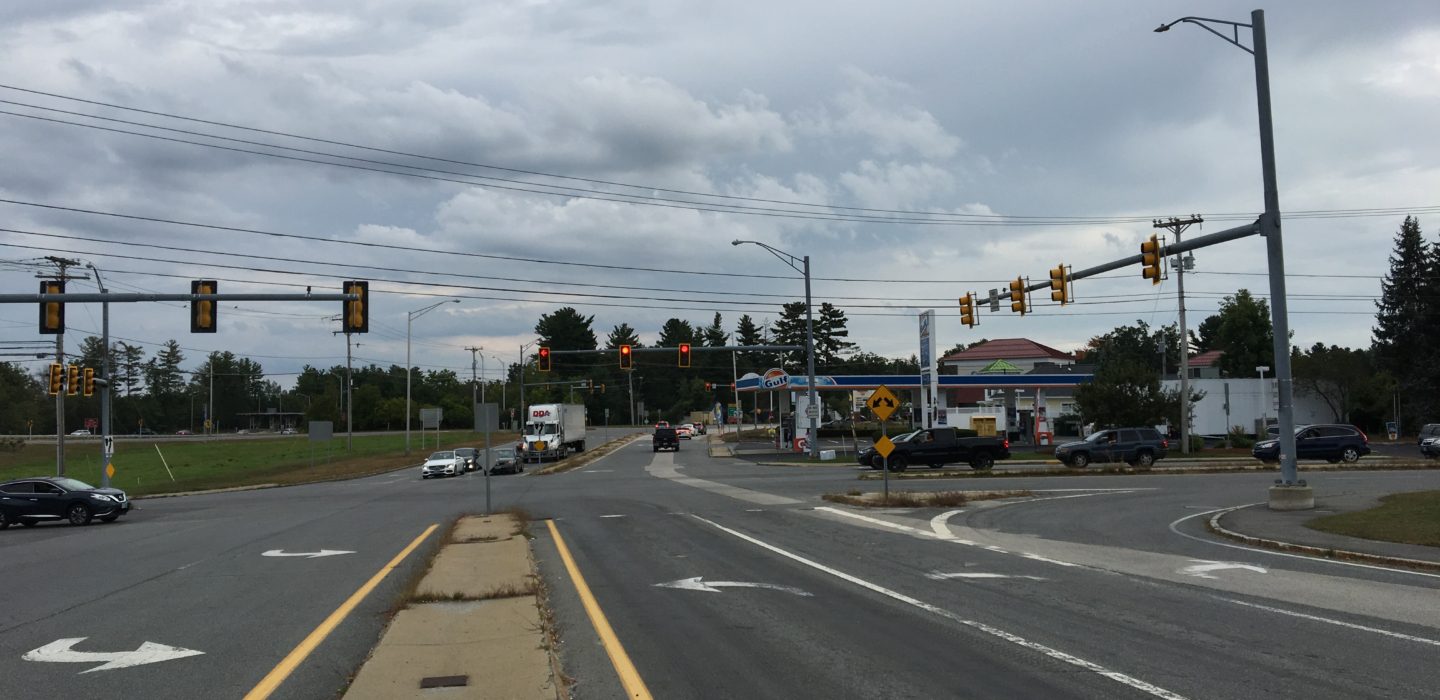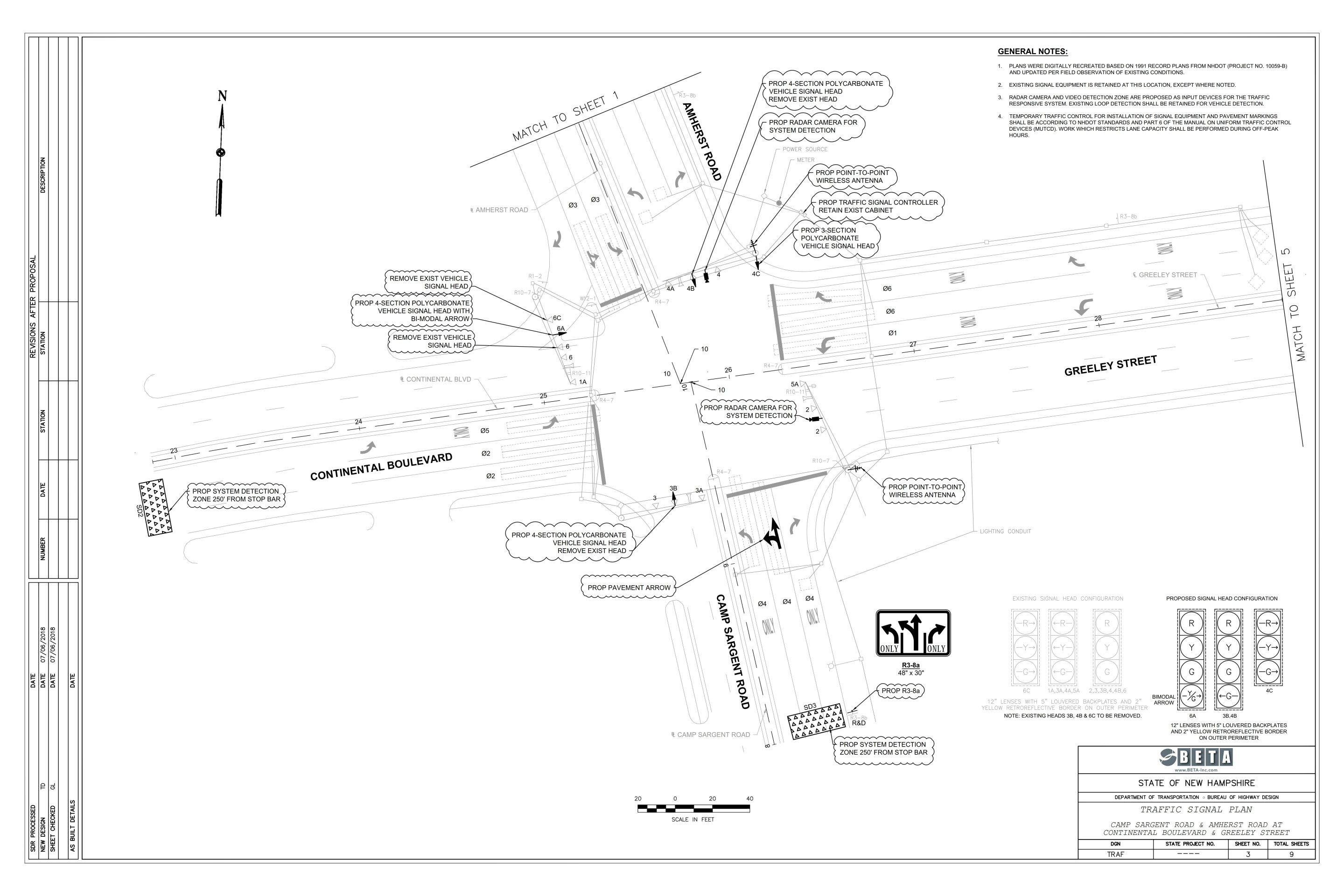Traffic Signal System Improvements
Merrimack, New Hampshire
As part of a land development project in Merrimack, New Hampshire, BETA prepared off-site traffic signal improvements to reduce long delays and vehicular queueing between intersections along the Amherst Road and Continental Boulevard/Greeley Street corridors. During peak time periods, eastbound and westbound vehicles could not progress through the closely-spaced intersections due to the presence of queued vehicles at downstream traffic signals. Additionally, the Executive Park Drive and Amherst Street signalized intersection experienced delays due to the adjacent backups on Continental Boulevard. BETA was contracted to develop solutions that would help alleviate vehicular queuing between intersections and thereby improve vehicular progression along the corridors.
BETA conducted an extensive field investigation and gathered the as-built plans to analyze the existing conditions. Significant communication and coordination with the Town and NHDOT was required throughout the project development process. The traffic signal systems designed by BETA provide continuous traffic flow and thereby reduce travel times, delays, and fuel consumption that can improve air quality. A Coordinated Traffic Signal System was incorporated that includes the Continental Boulevard, Greeley Street, Amherst Road, and Camp Sargent Road intersection; the Greeley Street and F.E. Everett Turnpike northbound ramps; and the Greeley Street and D.W. Highway intersection. This type of system enables multiple intersections to be synchronized to enhance the operation of one or more directional movements in a network. In addition, a Peer-to-Peer Responsive Traffic Signal System was installed to include the Amherst Road intersections with Executive Park Drive and with Continental Boulevard, Greeley Street, and Camp Sargent Road intersection. This Peer-to-Peer Responsive Signal System is the first of its kind in New Hampshire and has been found to operate more efficiently for closely spaced signalized intersections by allowing queues to be better managed between the intersections.


